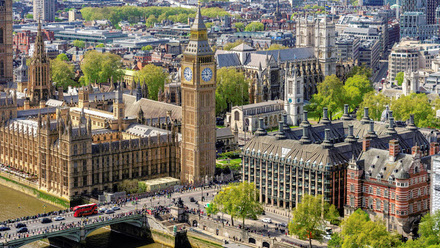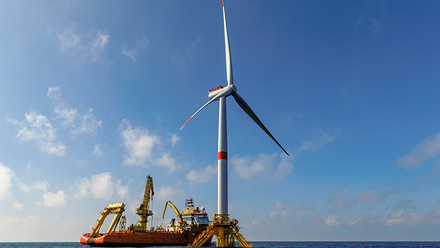IOM3 responds to government plans to boost hydrogen economy
Government has today (17 August) announced plans to create tens of thousands of jobs, invest billions of pounds and create new export opportunities by introducing the UK’s first ever Hydrogen Strategy.

Its new Strategy, launched by Business Secretary Kwasi Kwarteng, aims to drive forward the commitments laid out in the Prime Minister’s 10 Point Plan for a green industrial revolution to meet its ambition for 5GW of low carbon hydrogen production capacity by 2030.
According to the Government, the hydrogen economy could be worth £900 million to the UK and create more than 9,000 jobs by 2030, rising to £13billion and 100,000 jobs by 2050. Hydrogen will play a vital role in decarbonising energy-intensive sectors, such as chemicals, oil refineries, power, and heavy transport, like shipping, HGV lorries and trains. Analysis suggests that 20–35% of the UK’s energy consumption could be hydrogen-based by 2050.
IOM3 CEO Colin Church FIMMM CEnv, says, ‘“Green” hydrogen from renewable energy has an important role to play in the journey to net zero. The UK already has some experience in this as many IOM3 members know, so it is very good news that the UK Government is strengthening its support for this area. It is less clear that investing in ‘blue’ hydrogen will be compatible with net zero, so we will need to look carefully at the production strategy when that comes out next year.’
Alongside the Strategy, the Government has also launched a public consultation on a preferred hydrogen business model as well as consulting on the design of the £240 million Net Zero Hydrogen Fund, which aims to support the commercial deployment of new low carbon hydrogen production plants across the UK.
Measures outlined in the Strategy include:
- a ‘twin track’ approach to supporting multiple technologies including ‘green’ electrolytic and ‘blue’ carbon capture-enabled hydrogen production, and committing to providing further detail in 2022 in the government’s production strategy
- collaborating with industry to develop a UK standard for low carbon hydrogen
- undertaking a review to support the development of the necessary network and storage infrastructure needed to underpin the hydrogen economy
- working with industry to assess the safety, technical feasibility, and cost effectiveness of mixing 20% hydrogen into the existing gas supply
- launching a hydrogen sector development action plan in early 2022 setting out how the government will support companies to secure supply chain opportunities, skills and jobs in hydrogen.
IOM3 has welcomed the Strategy, the clarity it provides on the direction of travel and the potential to support green skills and jobs. Low carbon hydrogen will play an important role in the mix of technologies required to transition to a low carbon, resource efficient society and provides greater certainty and confidence to support innovation and investment. IOM3 looks forward to further detail in the Government’s production strategy and urges continued momentum and action following the consultation on business models to make large-scale low carbon hydrogen commercially viable and in developing a UK standard for low carbon hydrogen that is consistent with the net zero target.
In his statement, Business & Energy Secretary Kwasi Kwarteng said, ‘Today marks the start of the UK’s hydrogen revolution. This home-grown clean energy source has the potential to transform the way we power our lives and will be essential to tackling climate change and reaching net zero.’
The government also announced a £105 million funding package will be delivered through its Net Zero Innovation Portfolio announced in the Prime Minister’s 10 Point Plan, including:
- £55 million Industrial Fuel Switching Competition
- £40 million Red Diesel Replacement Competition
- £10 million Industrial Energy Efficiency Accelerator (IEEA)
The Hydrogen Strategy is one of a series of strategies the UK government is publishing ahead of the UN Climate Summit COP26. The UK government has published its Industrial Decarbonisation Strategy and Transport Decarbonisation Strategy and is due to publish its Heat and Buildings and Net Zero Strategies later this year.







